How to Hard-Cook Eggs
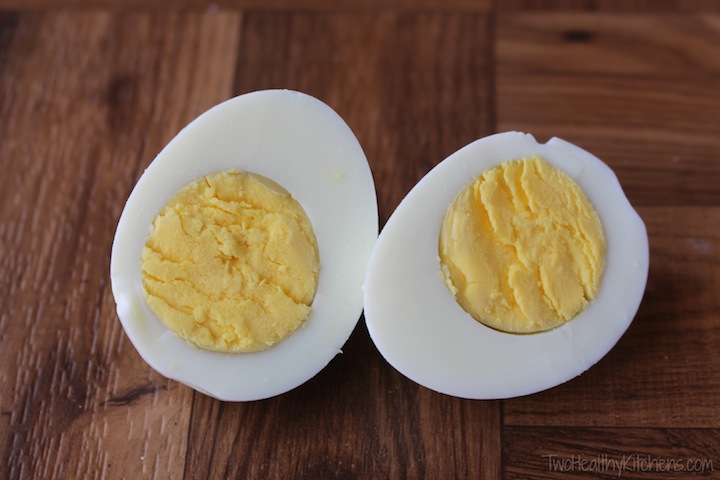
With Easter just around the corner, we know lots of you will soon be hard-cooking eggs to color for the Easter Bunny. (And that rascally rabbit always does such a good job hiding those eggs!)
But what’s the best method to achieve perfectly cooked eggs?
First off, we compared notes and quickly realized that we’ve both been using pretty much the same method for years … with great success. Ok, seemed like that would be a good recommendation to pass on to you, our beloved THK readers. Right?
Well …
We paused for a moment, knowing that plenty of other people have their own, different “I-swear-by-this” version of how to hard-cook the perfect egg. Gretchen’s husband even has his own way!
Huh. Maybe Gretchen’s husband was right, too. (It’s been known to happen.)
We also know that plenty of people struggle with the dreaded “green ring” or end up with rubbery, dry, overcooked eggs. What would cause this? What went wrong for them?
Inquiring minds want to know …
After hours (no joke!) of research and discussions (and Gretchen boiling enough eggs to make the hens work overtime) we’re ready to put our research to rest … and share with you what we learned.
We consulted food geniuses such as Harold McGee and Labensky & Hause, as well as checking out everyday-food-gurus like Martha Stewart, Elise at Simply Recipes, Real Simple, Cooking Light, and even the American Egg Board, plus lots of other bloggers.
Turns out, the way we’d each been boiling our eggs for years really is more or less the standard approach you’ll typically find. This method should yield wonderfully creamy, perfectly cooked-all-the-way-through eggs (without the dreaded green ring!).
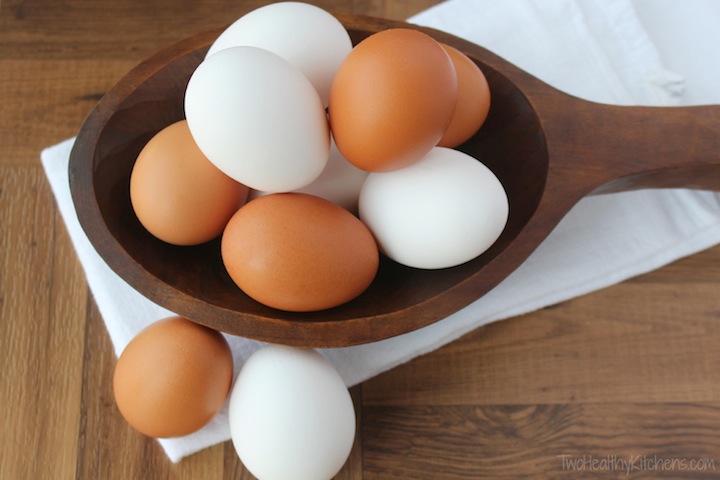 So let’s make some eggs! And let’s avoid rubbery, overcooked, dry eggs, shall we?
So let’s make some eggs! And let’s avoid rubbery, overcooked, dry eggs, shall we?
Here’s our tried-and-true THK method:
1) Begin by placing 12 large eggs (of any variety) in the bottom of a pot. The eggs should not overlap. They should be in a single layer.
2) Cover the eggs with cold water, about 1 – 2 inches over the top of the eggs. (Submerging the eggs directly into already-boiling water can cause the egg whites to cook too fast, resulting in tough whites and potentially undercooked yolks.) Leave the pot uncovered at this point.
3) Place the pot on the correct-sized burner, and turn the burner onto high heat.
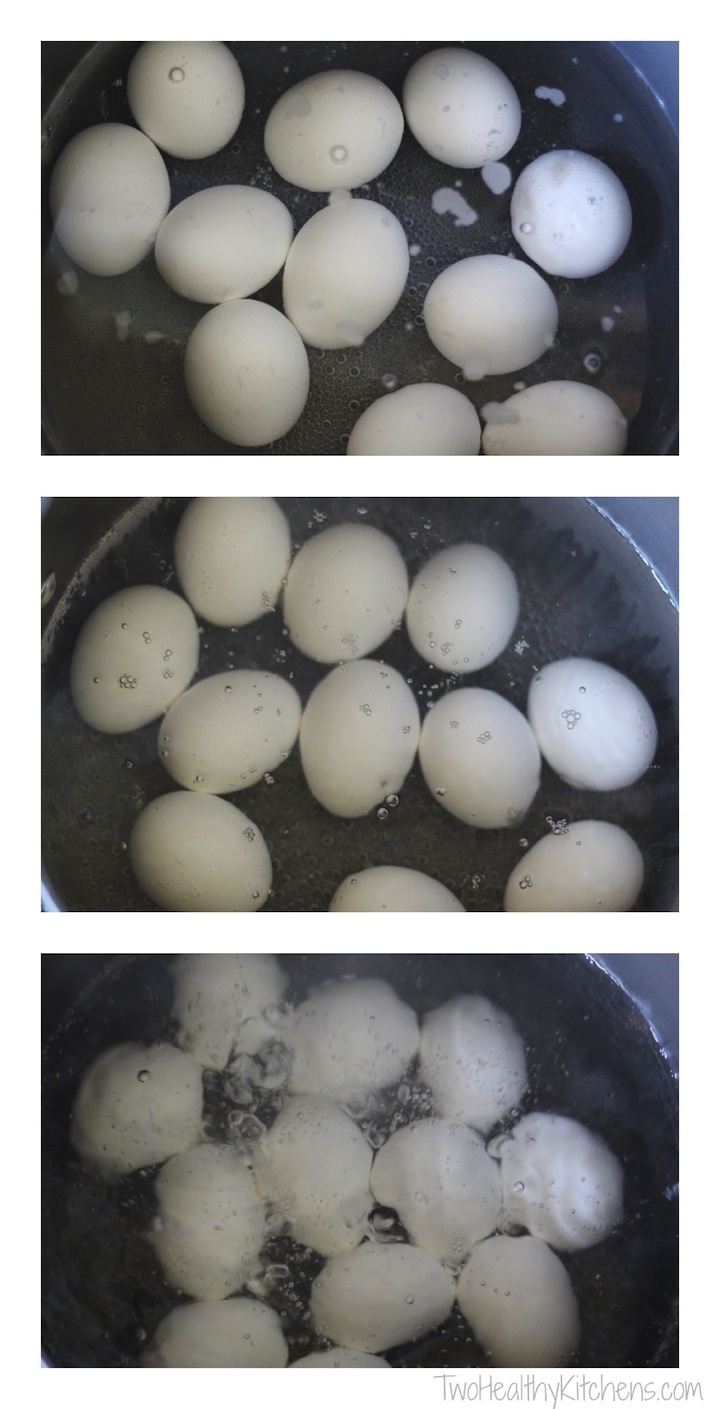
4) Bring the water to a gentle boil (not a hard, rolling boil, as this could cause the eggshells to crack).
5) As soon as the water has reached a boil, immediately turn the heat off and remove the pan from the heat (letting the eggs boil too long can make them tough or rubbery). Here’s where you’ll notice why we didn’t name this post “How to Hard-Boil Eggs” … that kind of intense heat is the enemy of perfectly cooked eggs. You don’t want them to stay at a boil.
6) Cover the pot and let it sit for 12 minutes.
7) Meanwhile, prepare an ice bath by filling a large bowl with ice and cold water.
8) When the 12 minutes are up, immediately put the eggs into the ice bath to stop the cooking process. Using a slotted spoon, gently take one egg at a time from the hot water and carefully place the egg into the cold water of the ice bath.
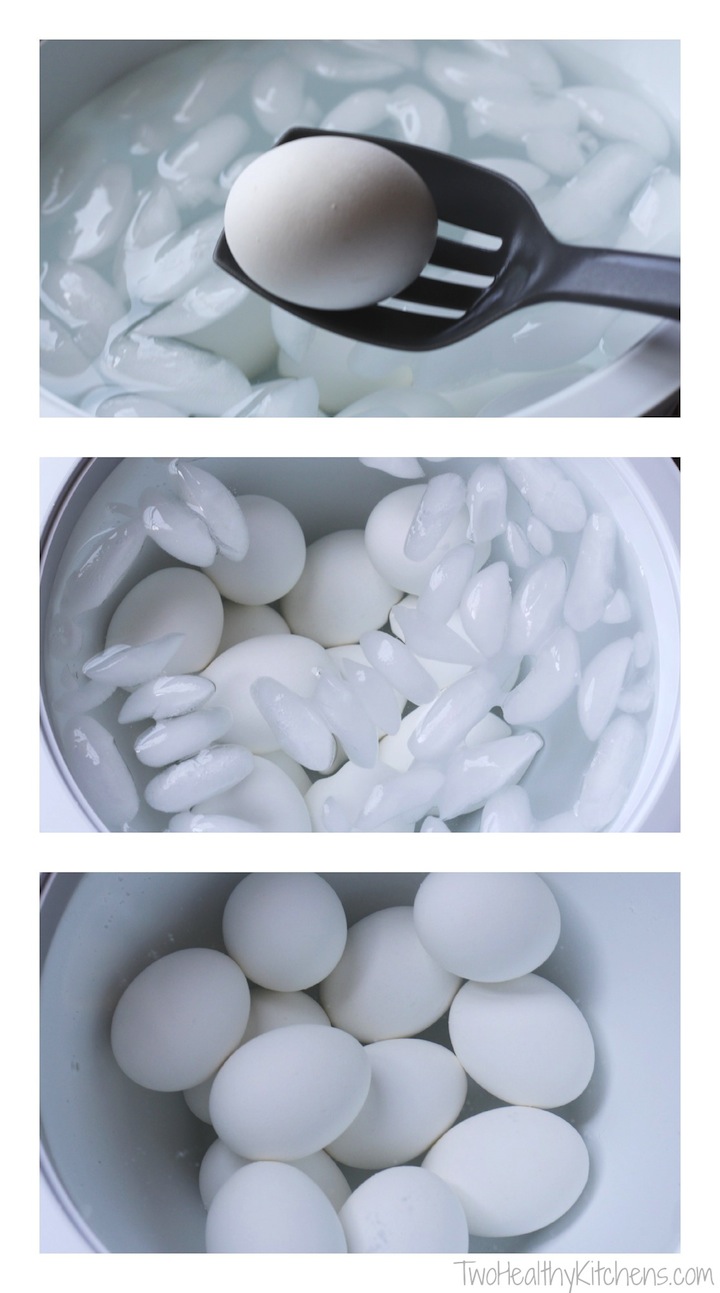
9) Leave the eggs in the ice bath for at least 10 minutes.
10) After 10 minutes, use the slotted spoon to remove the eggs from the water, and place them into a bowl or egg carton.
11) Store the eggs in the refrigerator.
Seems pretty simple, right? Yup, it actually is!
So how do some people have different techniques that work, too? And why is it that other people struggle to get their eggs to creamy, perfect, Easter-Bunny-ready perfection?
Well, turns out that there are a lot of variables that can affect your eggs:
- The number of eggs cooked
- Whether you truly cook them in a single layer or try to double-up
- The size of the eggs you use
- The temperature of the water when you start the eggs
- Whether or not you bring the water just barely to a simmer or actually to a true boil
- How long you let the water boil before turning off the heat
- How long you let your eggs sit after removing them from the heat
- And even your altitude, which can affect water’s boiling point (Fun Fact: According to the American Egg Board, it’s almost impossible to hard-cook an egg at over 10,000 feet!)
- Plus, you have to take into account exactly how done you personally like your eggs.
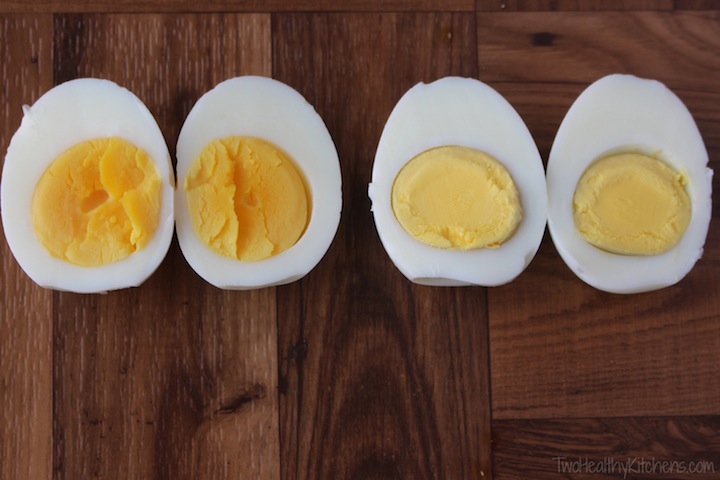
As you can see in the photo above, just the small difference of turning off the heat at a simmer versus turning it off at a true boil can have a noticeable impact on your final eggs.
All of this should help you troubleshoot your own hard-cooked eggs if they aren’t turning out quite perfectly.
It also helps to explain why plenty of reputable people, including Gretchen’s egg-cellent (oh come on … we had to!) husband, are able to use slightly different cooking methods with success, as well.
For example, we’ve seen very knowledgable sources recommend letting the eggs sit at a low simmer for about 15 minutes (and McGee mentions doing this for 25 – 35 minutes). If you think about it, that’s not substantially different from our own method. It’s just slightly changing the intensity of the heat (these eggs never quite reach the higher heat of a boil) and counterbalancing that with a longer cook time. You need to be careful with this method, though, that the heat doesn’t get too intense, which can cause your eggs to turn hard and rubbery or can create green rings around the yolks (more about that in a bit …).
Similarly, we’ve seen a suggestion for bringing the eggs to a full, rolling boil and keeping them at a boil for one minute before turning off the heat and allowing the eggs to sit for just 10 minutes. In reality, that’s not so very different from our own method, either – this simply increases the exposure to heat (allowing the eggs to remain at a full boil for a minute), while decreasing the time the eggs are heated (from 12 minutes to only 10). This probably works just great, although we like to avoid a rolling boil simply because it can cause the eggs to bash into each other or the pan … and crack.
But you get the point … little differences can help you tweak your method if you’re having trouble, and can also explain why you and your husband can have different cooking methods that both make the Easter Bunny very happy.
A couple more notes:
- Salt and Vinegar – We found a few people who mentioned adding salt or vinegar to the water to prevent the eggs from cracking, but we didn’t find a lot of evidence to support this, and we don’t find this to be necessary with our cooking method. In fact, we don’t find the need to add anything to the water except eggs.
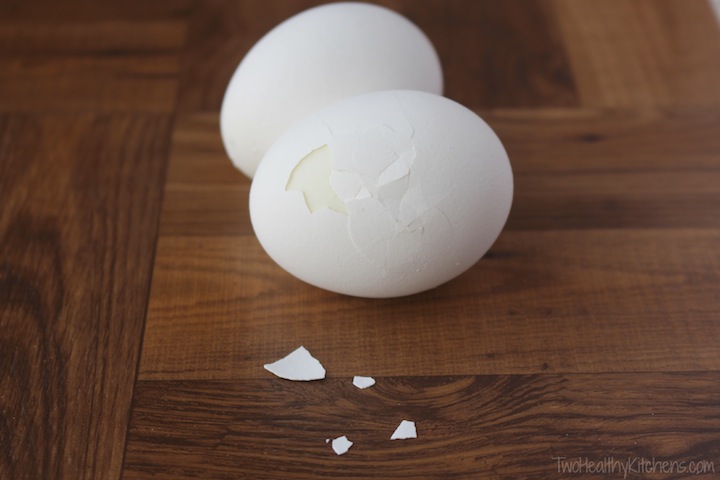
- Baking Soda – Others suggest adding baking soda to the water to help the eggs separate from their shells and peel more easily, but again, we didn’t find widespread support for this idea. Actually, the very best trick is to plan ahead just a little and purchase your eggs a few days before you hard-cook them. If possible, try to use eggs that are at least 5 – 7 days old (but not outdated, of course!). Super-fresh eggs will certainly cook just fine, but they’ll be more difficult to peel.
- The Dreaded Green Ring – Yeah, let’s talk about that … you know, that green-gray ring that sometimes forms around the yolk? It’s perfectly fine to eat – so don’t worry! As the American Egg Board explains, this ring is due to a chemical reaction between the sulfur in the egg whites and the iron in the yolk. It usually occurs when the eggs have been kept at too high of a cook temp for too long or weren’t cooled quickly enough after cooking. While not visually appealing, these eggs are totally safe to eat. Next time, just try to reduce the vigorous heat in your cooking method, or maybe reduce the cook time just slightly.
So, now you’re armed and ready with everything you need to know to cook up the very best Easter eggs yet! The Bunny will be happy, your after-Easter egg salad will be a masterpiece, and you won’t have to guess on whether or not the eggs are done. Now that’s the recipe for a perfect egg!

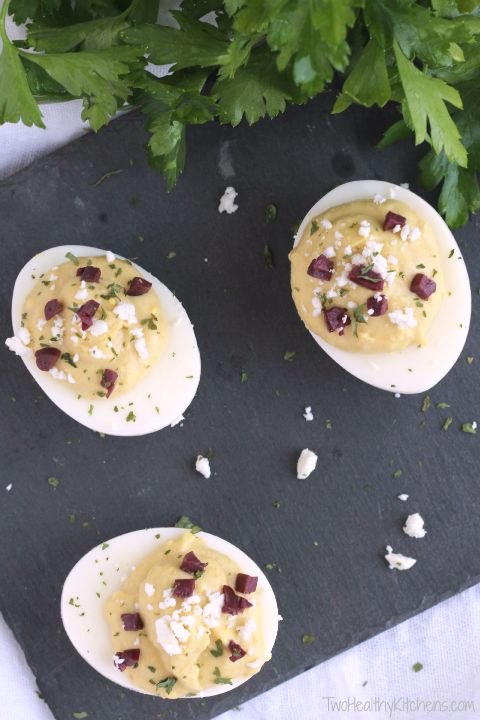
What a great post! Very thorough, and really good information. This is how I make mine too. A couple more things that I’ve heard can affect the spa time (soaking in the hot water) is what material your pot is made from (copper doesn’t hold the heat quite as well and will take a longer soak) and the age of the eggs. I can attest to the first, but don’t have a way to verify the second since I don’t have my own chickens, no matter how much I push my husband to get a few for the backyard. But that’s another story.
Haha! You’re hilarious, Susan! You’d definitely know how fresh the eggs were if you had your own chickens! Our neighborhood rules don’t allow chickens, but it sure would be amazing to have fresh eggs every day! 🙂
Thanks for the great tip on the material of the pot! I suppose since I only have one, I never really thought about that affecting the outcome, but you’re totally right! Fabulous info, Susan! Thank you!! ~Gretchen
Glad to know I’ve been doing it the right way, although I let mine sit for a little less time since I like the yolk more on the medium side.
Yay Sylvie! High five!! 🙂 And that’s perfect that you’ve figured out how to make yours so they are just right for you!! ~G&S
Thank you! I know it must have been a lot of work but I’m so glad to have the perfect egg boiling method. I have needed this for sure!
Haha! It was a LOT of eggs, Mirlandra! But it gave me the perfect opportunity to make more Egg-amole! 😀 And it was totally worth it – now you don’t need to do the testing! Shelley and I have made hard-cooked eggs time and time again using this method – perfect every time!! ~Gretchen
Great post, and I love all the detail you have in there about how to do it the right way. I also use a little cheater thing when I cook eggs like this; I use an egg timer in the pot. Love it! Works like a charm. Thanks for sharing!
An egg timer?!? Debi! I’ve never heard of such a thing! Please tell me … how does it work?? I’m fascinated!
Even though I cooked dozens (and dozens!) of eggs, this was kinda fun … I like experimenting to solve a problem! I also had a blast testing how to make perfect microwave popcorn! 🙂 ~Gretchen
It’s pretty cool. You just put it in the pot with the eggs and cook as normal. It changes color. So, as long as you don’t walk away, you’re good to go. Here’s my post on it: http://lifecurrents.dw2.net/cooking-basics-boil-an-egg/ You can see it in action. BTW, I don’t usually leave links in comments, so feel free to delete the link if you want. 🙂